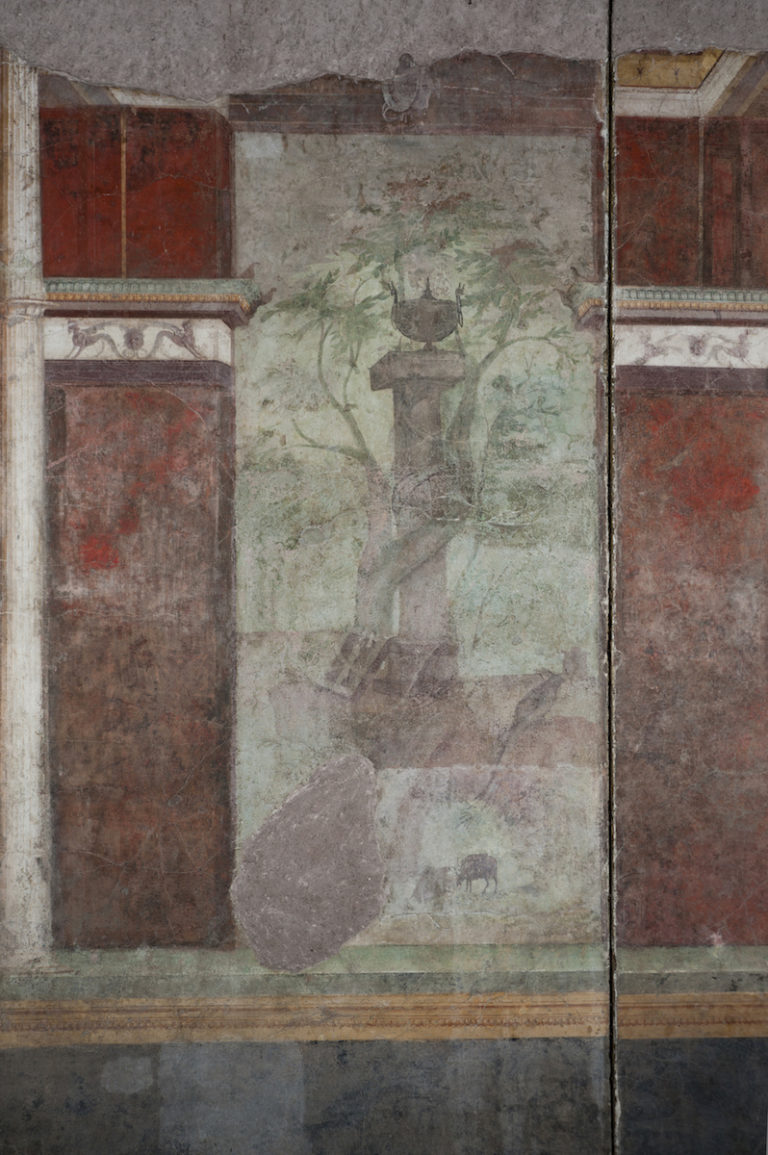The House of Livia
A rich 1st century BC private domus, brought to light by 19th century excavations, attributed to Livia on the basis of the name Iulia Augusta engraved on a lead pipe displayed in the tablinum (reception room).
The house is considered, within the Augustan complex, the residence reserved for Augustus’ wife. It consists of a quadrangular atrium onto which open four rooms paved in mosaic and with painted walls datable to around 30 BC: among the most important examples of the II Style in Rome in its most mature phase. At the back is the tablinum in the centre and, symmetrically, two rooms (alae). To the right of the atrium is the triclinium (dining room).
With the multimedia intervention, the visitor is welcomed into semi-darkness, as the rooms are illuminated in rotation to facilitate reading: from the atrium to the tablinum, ending with the triclinium. A narrative voice, combined with lightmapping, reveals the mythological stories depicted and emphasises the pictorial patterns of the frescoes. This provides the keys to appreciating the extraordinary beauty of the decorated walls, and to discover that the painted images responded to a precise programme desired by Augustus.
The tablinum is also called the ‘hall of Polyphemus’ because on the back wall is depicted the cyclops Polyphemus chasing the nymph Galatea. On the right wall, in the centre, is painted Io facing Argos, the giant with a hundred eyes who holds her captive, while Mercury arrives to free her.
In the right wing, the decoration is arranged around a protruding portico: between the columns, plant festoons adorned with bandages and objects from the cult of Dionysus. Above, runs a monochrome landscape frieze on a yellow background, very rare of its kind, with scenes of real life and ritual scenes in an Egyptian setting.
The left wing depicts fantastic figures (griffins, winged victories), heraldically facing each other on the sides of candelabra and resting on the branches of the tree of life.
The triclinium preserves an extraordinary pictorial decoration on a cinnabar background, better known as Pompeian red, on which aediculae open up to reveal sacred and rural landscapes with effects of spatial depth.
Admission with Forum Pass SUPER, Full Experience tickets and Membership Card










